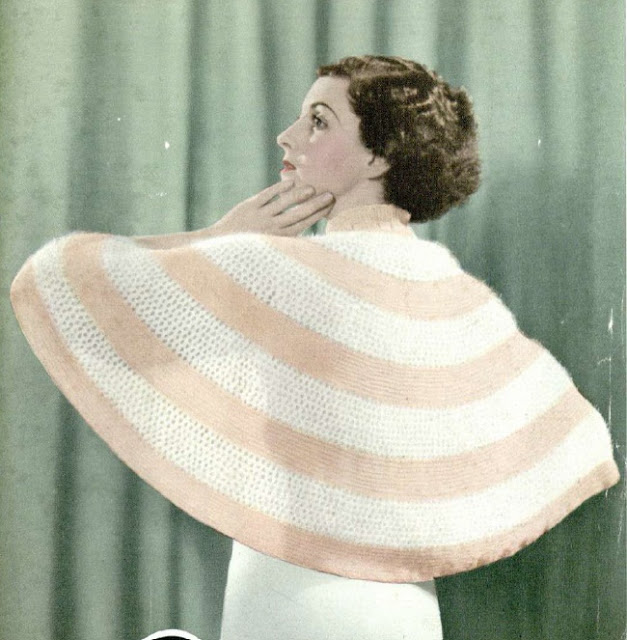We forget, however, that people also used to knit stockings. Here is a selection of socks and stockings from a very old book from the 20s or earlier.
I imagine that wearing hand knitted stockings was warm, but neither stylish nor comfortable. I think they would have been scratchy, and difficult to keep up. Garters would have been required. No doubt they would have been made in drab grey or brown. A necessity in Europe perhaps, but probably not needed in most parts of Australia.
A few days ago I acquired an old New Idea crochet book from the early 70s and was thrilled to find this pattern for stockings, or rather tights.
I so want to make these tights. How fabulous are they? How jealous would your friends be if you had them, and how impressed they would be when you said you had made them?
The word stockings was originally used to indicate very long socks for either men or women. Here is an illustration from a book published in 1913 for a "Gentleman's Cycling Stocking." I can just imagine it with the lycra!
 |
| Gentleman's Cycling Stocking |
On the same page there are the instructions for "Sea-Boot Stockings".
It seems amazing to us today that people would have darned socks (and stockings), but when you think that they had to knit the socks themselves and that they were woollen, it's more understandable. My mother told me last week that she will still darn a favourite pair of socks if they are of good quality. She also told me that she still uses her darning mushroom, and that she was surprised to see on an episode of the TV show "The Collectors", the darning mushroom was featured as the "mystery object", and that no-one knew what it was. Have you ever seen one of these?
 |
| Darning mushroom |
You would hold it by the handle and insert it into the sock. The flat part comes up behind the area to be darned, usually the heel, and you work over the top of it so that your stitches don't sew through to the back of the sock. You would make a little woven mesh patch to fill the hole, (which was uncomfortable to stand on.)
Socks are knitted on four double pointed needles. You knit around in a tube. You can achieve the same effect these days with a short circular needle.
An important part of sock construction is "turning the heel". I remember once reading a book, where the character who was knitting was a daydreamer, and had a tendency to accidentally "turn the heel twice", so that the sock went around in a square at the bottom. No doubt this has happened to a few dreamy knitters in the past. I wish I had a picture of this. We will all just have to imagine. Here are some different styles and methods for heels and toes.
This book recommends purchasing 5 skeins (or one ounce) of khaki wool for the socks. The skeins were hanks, which then had to be wound into balls after purchase.
In books about war, you often read about soldiers marching barefoot, or marching in ragged boots without socks. No wonder the knitting needles were ever busy. I wonder how many miles of marching it took to wear out a pair of socks.
Another wartime book, The Australian Comforts Fund, insisted on good workmanship in the way of sock knitting.
My very old book also has pattern for gaiters. These also feature quite regularly in books of pattern for babies up until the 1950s.
There are lots of little leggings sets with gaiters rather than sock feet. I guess this was much more sensible for toddlers or once baby was walking and needed shoes.
Women did not really wear socks much until short socks became fashionable in the 50s. Stockings were worn with a dress and shoes, even when at home doing the housework.
Here is a cute idea from the 50s:
 |
| Angora Topped Sports Socks |
And looking for pictures of socks on the internet today, I found these. I wish I had the pattern!
















































